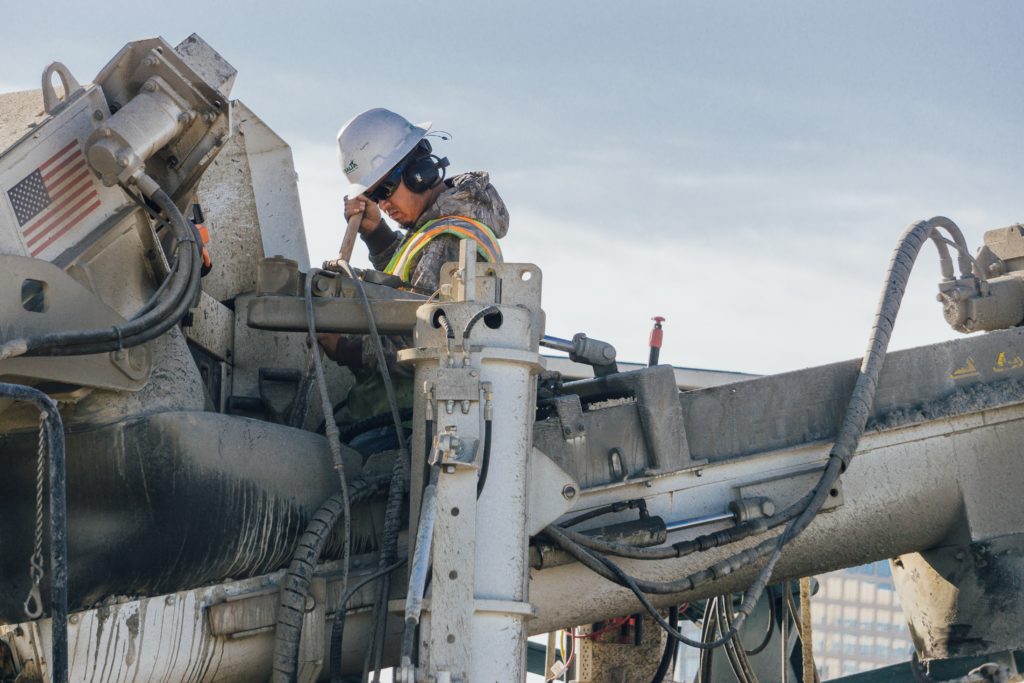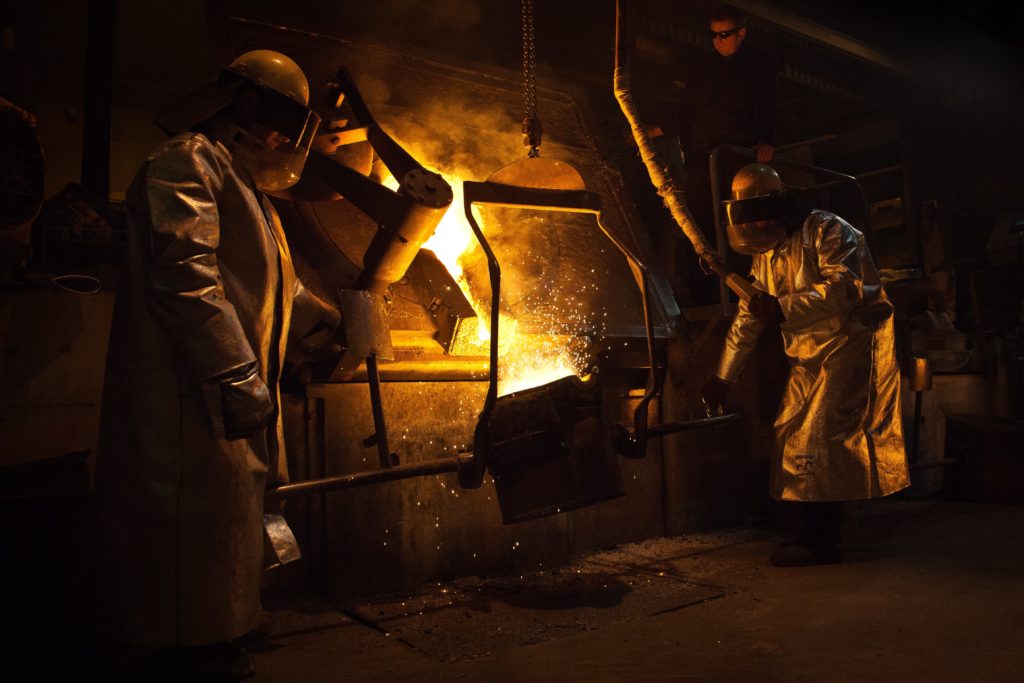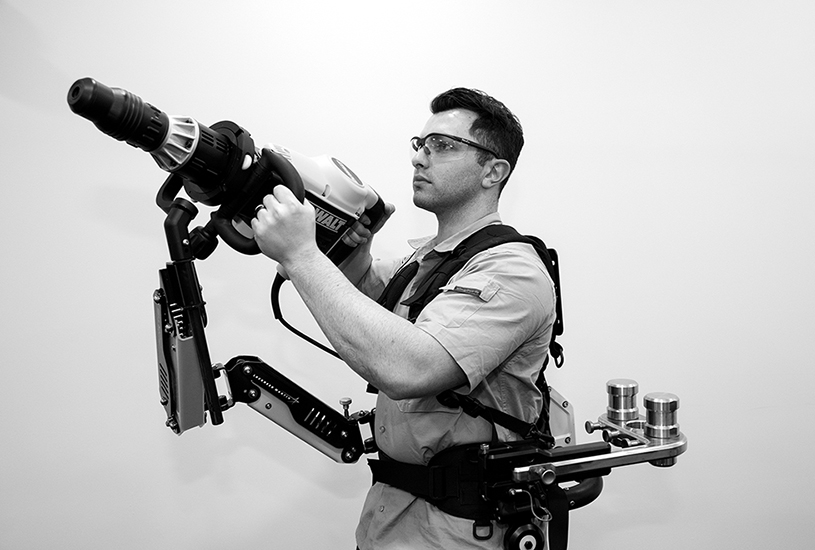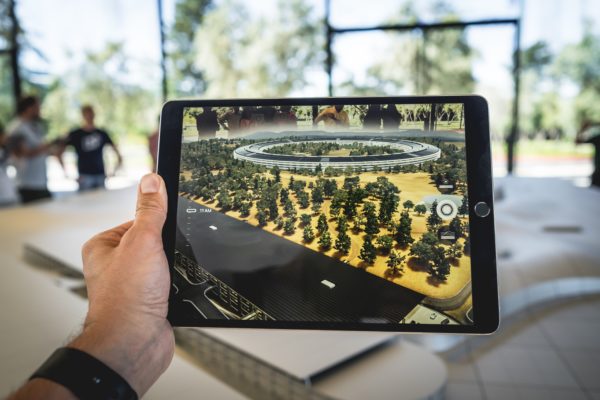It might not turn you into Iron Man, but Lockheed Martin’s new-generation FORTIS passive exoskeleton – enhanced by Deakin researchers – can certainly offer a taste of super-power.
Launched to the defence sector in 2014, FORTIS is now being refined by Deakin human performance and computational intelligence experts and is entering a new phase of non-military applications.
FORTIS has potential anywhere heavy lifting is required, like mining, aerospace, automotive, heavy manufacturing, or emergency services (where the weight of an oxygen tank, for instance, can make lifesaving a dangerous challenge).
FORTIS is one of the world’s leading exoskeletons, with only a handful of brands on the market. However, the global market is expected to grow from around US$25.4 million in 2015 to around US$3.5 billion by 2026.
Originally developed to assist soldiers to carry heavy equipment over long distances, FORTIS is a passive exoskeleton that can make tools weighing up to 16 kilograms feel weightless. It reduces fatigue and improves worker safety – making tasks between two and 17 times more efficient, depending on the tools and tasks required.

In Deakin’s first project with Lockheed Martin – one of the largest global security and aerospace companies – the team at the Institute for Intelligent Systems Research and Innovation (IISRI) are delighted with the opportunity to improve FORTIS.
Supervised by IISRI’s Dr Mohammed Hossny, Dr Darius Nahavandi led the initial 12-month project as part of his PhD and is now continuing the FORTIS advancements. The two are working alongside IISRI researchers Dr Navid Mohajer, Dr Imali Hettiarachchi, Ms Julie Iskander and Mr Mohamed Attia.
“The project has, so far, focussed on quantified design and fabrication of additional components, with biomechanical and loading analysis of the FORTIS exoskeleton,” explained Dr Nahavandi, “but we expect this will be an ongoing project and we’ll continue to work on further refinements. The next phase will be to investigate reducing its weight through the use of carbon fibre.”
The researchers used signal processing techniques and motion capture, obtained from sensors on the arms and shoulders of exoskeleton operators, to test the ergonomic effects of specific power tools on the human body. They then designed and 3D-printed new attachments to expand FORTIS’s functionality, including a new housing that allows it to carry external loads, which would usually be mounted on an individual’s back.
“At IISRI we’ve been looking at human/machine interface and haptics since 2006 – investigating how we can enhance human performance through the use of devices and machines,” explained IISRI Director Professor Saeid Nahavandi.
“The same principles of how the body works and expends energy in military use have been applied for adaptation in industrial settings. We have used the latest human biomechanics software and integrated design, along with rapid prototyping, virtual prototyping and virtual testing.”
“It may look simple, but developing technologies that are a help and not a hindrance is a deceptively difficult engineering task,” said James Heading, Lockheed Martin Australia’s Senior Business Development Manager.
“The research partnership between Lockheed Martin Australia and Deakin University has helped mature the thoughts and design concepts for industrial and military applications of the FORTIS exoskeleton, by providing the necessary physical and biomechanical characteristics Deakin University has now gathered.”
Austrade’s Senior Investment Specialist in Advanced Manufacturing and Defence, Roland Stephens, added that the project “demonstrates both the attractiveness of Australia as an R&D investment destination for global primes like Lockheed Martin, and reveals the vitality of Australia’s universities in supplying commercially-relevant capability to those primes”.
So how does FORTIS work?
FORTIS is lightweight and doesn’t hinder normal walking or other movements. It works by passively transferring the weight of the user and additional components to the ground, so, although the feet and the exoskeleton are in contact with the ground, only the exoskeleton is handling the weight.
“For many people working in heavy industries, working on a curved surface in three dimensions can be back-breaking. If you support the back and shoulders, you minimise the risk of injury and can perform a task for much longer,” said Darius Nahavandi.

“We’ve also been working with other discipline experts, such as researchers at Deakin’s Motion.Lab and Institute for Physical Activity and Nutrition, which is a research world-leader in human movement and motor skill development.”
“Our longer-term goal is to make FORTIS a clever and capable active system, but this is a very big challenge,” added Professor Saeid Nahavandi.
He noted that, if exoskeletons were intelligent and active, they could know where the next step would be and assist people with propulsion, with many potential applications in areas like health, or even lifestyle.
“One Holy Grail would be to give people in their late 50s and 60s the opportunity to master a major challenge, like climbing Mt Everest. Many people at this age have the money and time to be adventurous, but they don’t have the energy they once had. An affordable exoskeleton would enhance their mobility and, one day, could match their ambition to achieve with the wisdom of their years.”
Mining potential: ‘Brute strength and gym sessions aren’t enough.’
The IISRI team are excited by FORTIS’s potential in the mining industry – a huge industry in Australia that faces a relatively high incidence of injury and time-consuming processes. Given the annual cost of injury in Australia (approx. $61.8b overall), there is enormous potential for the sector to take up FORTIS and reduce the incidence of injuries.

In one project, Darius Nahavandi was engaged to assist with a manual handling injury crisis at Swick Mining Services in WA. He assessed the tasks involved and used video, motion tracking and biomechanics evaluation to get a grasp on how to reduce manual handling injuries in a process where several tons of minerals are moved through drill rods and accessories.
After replicating the workplace environment at Deakin and trialling different movements, he developed some minor changes to site set-up and body positioning that achieved fantastic results within a short time.
“Overall, with Darius assisting and developing a rapport with crews, the message began sinking in that even brute strength and gym sessions weren’t providing an advantage,” said Shannon Harding, General Manager, Support Services, at Swick Mining Services. “In fact, they often hindered the flexibility required to cope with the relentless unnatural body positions needed to complete the drilling offsider tasks, involving up to three tons a day in a 12-hour shift. Darius’s project reduced the total recordable injury rate from 25 to seven injuries per million person hours.”
Claire Whitely
Staff writer



